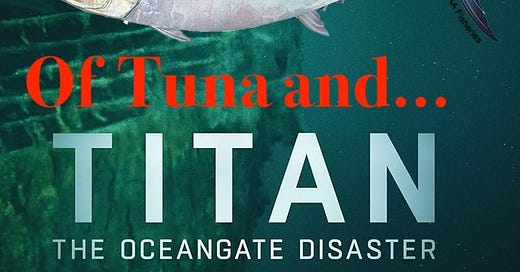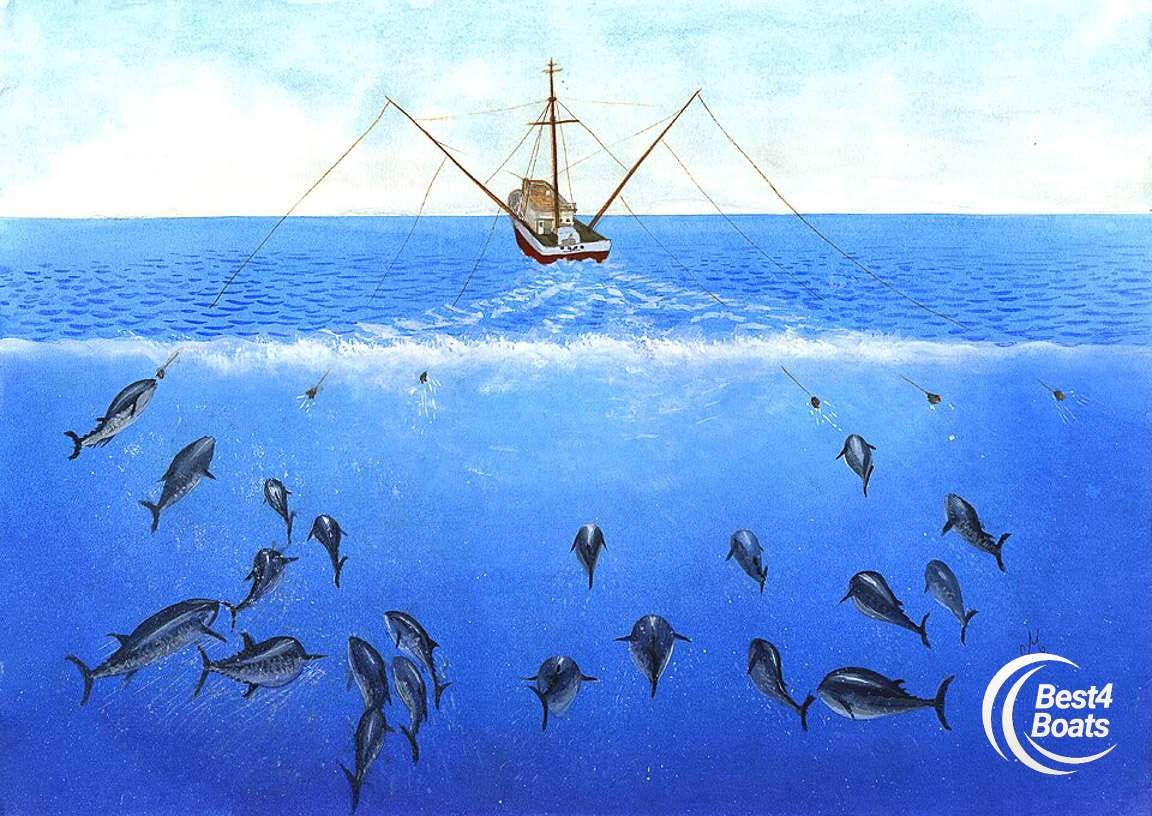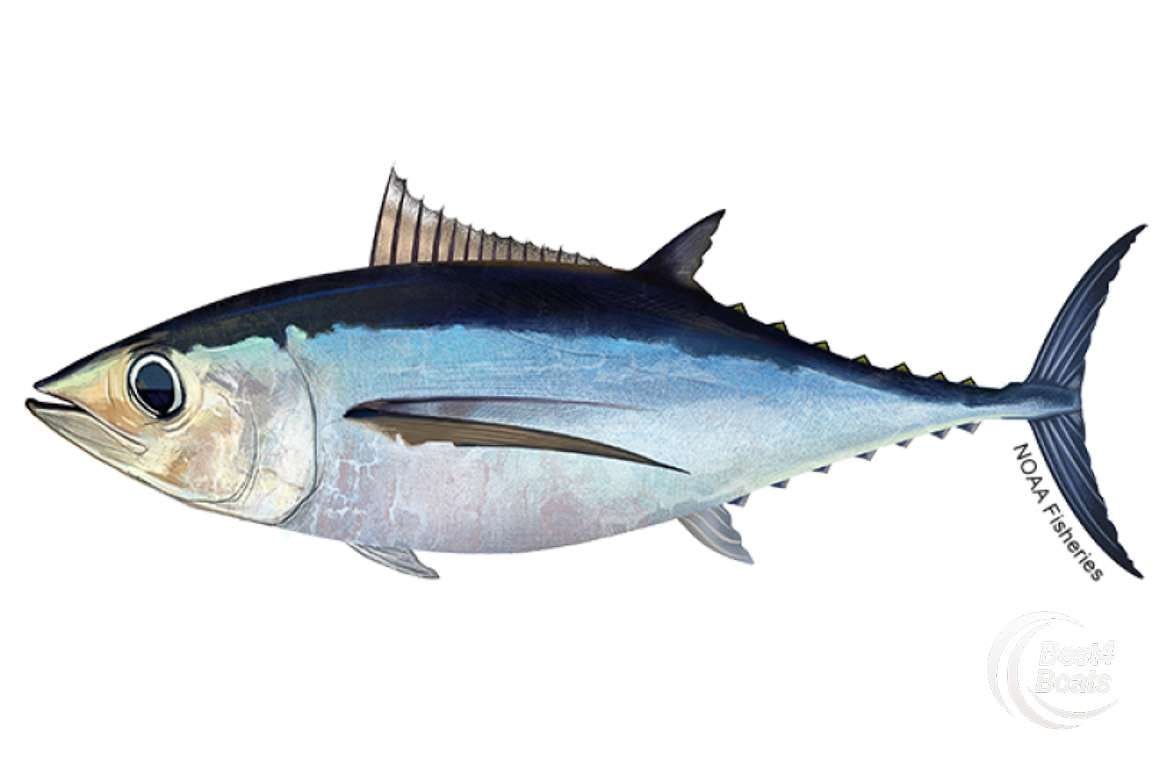Ah! Hello again, Substack. I confess, I hop onto this whacky, exciting platform and am sometimes struck with a feeling of inadequacy. Everyone else is so damn prolific and fired up. I’m naturally a one-entry-every-week-or-two type who is more likely to drop a bit of sea salty journalism or a wayward observation hammered into readable form than a revolutionary manifesto. Forgive me. Nevertheless, I offer two meaty, personal flavored, somewhat insane newly published stories—one about Oceangate, the other about local tuna.
Netflix’s Titan Documentary Review
I’ve written before about how I interviewed for a job at Oceangate—the Everett, Washington-based deep sea manned submersible tourism company of 2023 implosion tragedy fame. Well, Netflix’s new documentary Titan: The Oceangate Disaster dropped recently and I just had to review it. Bottom line, the excellent documentary exposes a lot of the behind-the-scenes details that dropped my jaw. But out of the mess does emerge one whistleblower hero—UK Navy veteran and ex-Oceangate marine operations expert David Lockridge. We should all look to Lockridge’s example not just within the context of the Oceangate example, but in our daily lives.
I’m also struck with gratitude that I did not get the gig, which did sting at the time. I, a young marine scientist and nautical journalist, thought Oceangate was a sort of SpaceX of the sea back in those days. The hype, unmarred by any of these revelations from the documentary, was real. What’s more, the job I was applying for would’ve had me work with the paying clients as their best buddy and general operations assistance. It’s quite possible the last thing those folks would’ve seen before going down was me giving them a thumbs up. Truly. Terrifying.
Opening from my review:
Mark Monroe-directed Titan: The Oceangate Disaster opens from the point of view of a dinghy approaching the infamous deep-sea tourism submarine (also named Titan). The vessel bobs on the surface where it rests on its floating launch platform, a thick fog casting the scene in an ominous ambiance. A passenger crew is bolted inside the capsule where Stockton Rush, founder and CEO of Oceangate, shares words.
“There’s really nothing that happens that requires an immediate response. If you hear an alarm, just don’t worry about it. But thing you can do is don’t do anything.”
The screen fades to black as the submersible is bolted shut and the descent begins. Crack! A short, sharp crack pings from the dark. Almost like the sounds of stressed glass close to breaking. Crack! Crack! Another and another.
“I hear something,” a voice protests. Crack! Crack! The pace of the clicks increase, presumably with depth. Ice loudly spiderweb fracturing underfoot comes to mind. As a viewer you know how the story andes and are filled with dread. The footage is of course not from the actual June 18, 2023 fatal wreck, but one is experiencing the sounds and sights that those passengers would have…
You can read the whole review on Best4Boats.com here.
All About Albacore - Part I: The Catch
I’ve begun a series about Pacific Northwest albacore tuna (aka longfins) as a sort of Deadliest Catch-meets-Bourdain seafood adventure from the catch to market to our plates. Who am I to tell this story? Well, I’ve done a local gig as a deckhand-nobody on an albacore tuna troller, interviewed local tunamen for articles, and also processed whole frozen tuna with power tools in my pink bathtub to make Fijian fish head soup. I may not be a world-class expert, but that counts for something.
Part I: The Catch kicks the series off with some nutty sea story vibes from my time as a tunaman with an interwoven broader, marine sciencey and seafood context. If you like tales of greenhorns in over their heads, this one’s for you. One interesting perspective of my brief dip into this world is that it was during 2015 when an infamous climactic event called The Blob skunked the season for industry. Opening of the piece:
“One of the great American seafood sins of our times pertains to albacore tuna, specifically that we view this truly beautiful and delicious fish as essentially canned cat food. But there’s far more to the story with troll line caught Pacific albacore in particular being a world-famous, sashimi worthy quarry. The Japanese are hip to this, paying top dollar and treating our albacore with the culinary respect it deserves as a high-end menu item. Throw onto the conversation that the troll line caught albacore fishery of the Pacific Northwest is rated “Best Choice” for sustainability by the Monterey Aquarium Seafood Watch List, and what’s not to love? But like all seafood, the story of albacore begins with the catch. And like all catches, one must grasp the machinations of Mother Nature to understand what’s going on.
I write this during the summer as the oceans of the West Coast of the United States are roaring to life. To those unfamiliar with the Pacific Ocean’s ways, the seasons trigger changes every bit as dramatic as land’s leaf colors and flower blooms. For the northeastern section of the Pacific, broadly the West Coast to Alaska, one of the major natural phenomenon during the summer is the northward intrusion of warm water from the south. At peak, we’re talking an increase of about two to three degrees Fahrenheit. What’s a couple of degrees? For sea life, everything.
These cold waters known for herring, pollock, cod, and salmon abruptly face an invasion of tropical exotics. Animals more associated with California or Hawaii like mola mola, market squid, and Pacific bonito appear as if by magic off Oregon, Washington, and British Columbia. What’s more, the mixing belt of the cold and warm water bodies, called “The Edge” by fishermen, creates its own insanely productive ecosystem. Frankly, it’s an aquatic bacchanalia out there when The Edge sets up properly. Species from both world collide, maximizing the benefits of warm- and cold-water access for their specific anatomies and life cycles. Planktons bloom and food chain-supporting herring and squid swarm in their billions. Whales, sharks, and dolphin charge into the fray. Far ranging seabirds and brave open water commercial fishermen follow.
From a seafood perspective, perhaps the king of The Edge is the albacore tuna. Specifically, the fatty, high-end sushi worthy adolescents. Think of these teens as suckling pig or lamb quality when compared to the much larger, typically tropical deepwater dwelling adults who are pork or mutton chops in this analogy. From The Edge to your plate, albacore tuna also known as longfins are a regional culinary gem often overlooked domestically but famous worldwide…”
You can read the whole yarn and get into this series right here at Best4Boats.com
Consider buying my award-winning book, Salmon in the Seine: Alaskan Memories of Life, Death, & Everything In-Between. Available wherever books are sold. Leaving reviews on Amazon and Goodreads helps a ton too.







